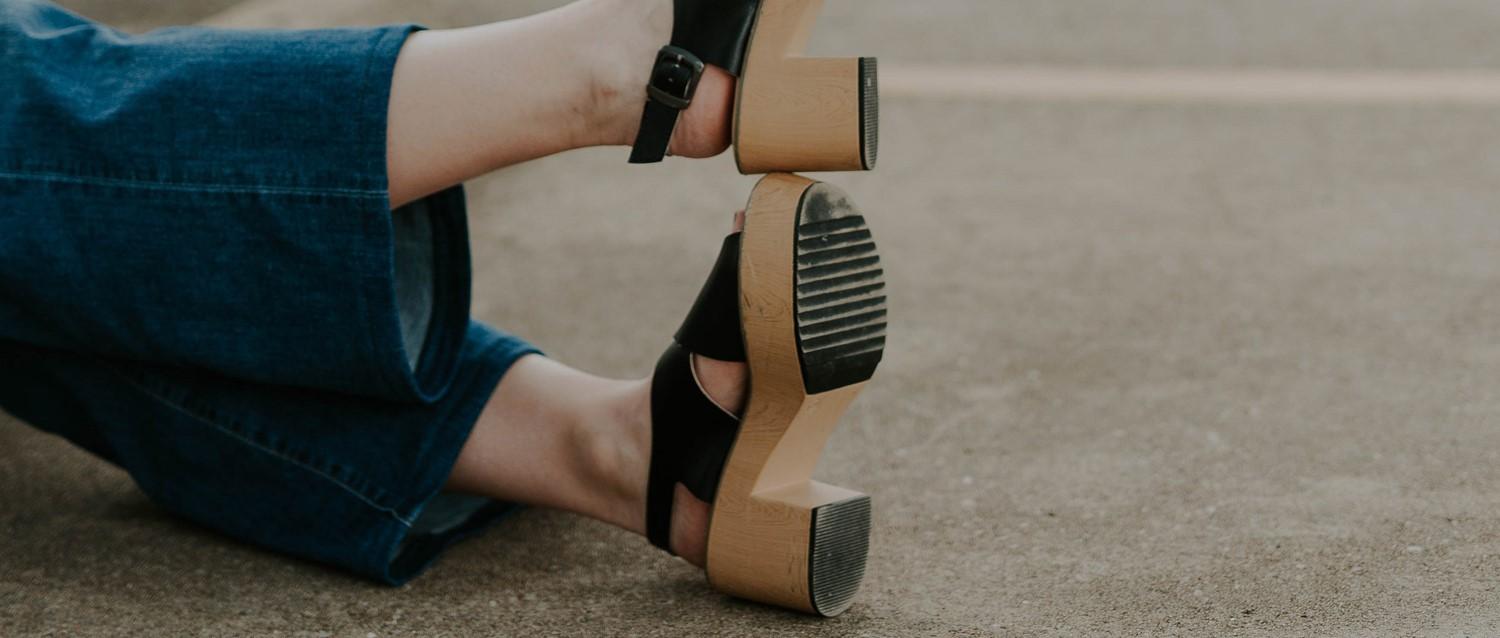
When should you worry about swollen legs?
Peer reviewed by Dr Doug McKechnie, MRCGPLast updated by Victoria RawLast updated 5 Sept 2024
Meets Patient’s editorial guidelines
- DownloadDownload
- Share
- Language
- Discussion
Swollen ankles? Your doctor has a tricky-to-spell word that means the same thing. Oedema is the medical word for any swelling caused by excess fluid under the skin.
In this article:
Doctors divide oedema into two main types:
If you have 'pitting oedema', you'll leave behind a little dent in the surface of your leg if you press firmly with your finger.
In non-pitting oedema - fairly obviously - you don't. Teasing out the difference is important because they have different causes.
There are many reasons for oedema that shouldn't cause concern - although oedema should always be checked out by a doctor to make sure there's no underlying problem. One of the most common causes of oedema in older people who spend long periods sitting is common-or-garden gravity.
Blood is pumped around your body at high pressure in your arteries. The pressure in your veins, which bring it back to the heart, is much lower. If you sit still for long periods with your legs down, you don't move your calf muscles, which act as pumps to take blood back to your heart against gravity. This can lead to fluid accumulating.
Continue reading below
Are your legs dependent?
If you have this kind of 'dependent oedema', just moving around more, keeping your legs up and clenching your calf muscles regularly when you're sitting will often help. Being very overweight and having varicose veins can lead to a similar kind of swelling.
Fluid retention at certain times of your menstrual cycle can also make your ankles feel swollen - usually just before your period. Wearing compression stockings can help with this. In more troublesome cases, your doctor may recommend surgery if you have varicose veins, which should solve the problem.
How's your heart?
In heart failure, your heart isn't strong enough to pump blood effectively around your system. For this reason, fluid can build up, especially in your ankles and lower legs. It can also lead to shortness of breath when you exercise or lie flat. If you have any of these symptoms, you should always get them checked out. Your doctor will arrange a blood test and possibly a scan of your heart. This sort of 'generalised oedema' can also cause puffiness around your eyes after you've been lying flat.
There have been dramatic improvements in treatment for heart failure in recent years. As well as 'water tablets' to reduce excess fluid, you'll be given tablets to reduce the pressure on your heart. In severe cases, a pacemaker can help your heart pump more efficiently.
Continue reading below
Organ-related oedema?
Kidney and liver problems can both lead to 'pitting oedema'. In some kinds of kidney problem - as well as in malnutrition - you'll get swelling of your hands and face, which is worse when you wake up. For instance, if you have a condition called nephrotic syndrome, large amounts of protein leak from your blood into your urine. This protein is lost by your body, leading to low protein levels in your system. This in turn can lead to a build-up of fluid. This is often seen first in the legs if you're an adult, or in the face first in children.
Oedema can also happen following cirrhosis or liver failure.
If you have any unexplained oedema it should always be checked out as soon as possible by your doctor.
A one-sided story
If you have oedema of just one leg, the cause is probably different from oedema which affects both your lower legs. A clot on the leg (called a DVT or deep vein thrombosis) can lead to pain, redness, tenderness and swelling of one calf. Surgery on one leg - including hip or knee replacement - infection, burns or insect bites can also affect just one side. Very rarely, a tumour can block the veins on one side.
Continue reading below
Not in the pits
It is also possible to have swelling that doesn't 'pit' when you press the skin. An underactive thyroid gland and a condition called lipoedema - an abnormal build-up of fat cells that often runs in families - both cause non-pitting oedema.
Lymphoedema is swelling caused by blockage in the network of lymph channels and lymph nodes throughout your body - the swollen glands in your neck you can feel when you have tonsillitis are lymph nodes. Your lymph system plays a crucial part not just in fighting infection, but also in draining excess fluid. Lymphoedema does cause pitting oedema, but the skin doesn't 'give' when you press in the same way as it does in, say, heart failure. It also tends to affect a specific part of your body - such as one arm after surgery for breast cancer on that side.
Lymphoedema can be a complication of surgery or radiotherapy treatment affecting your lymph nodes. It can make you more prone to skin infections. Your specialist team will be able to advise on lymphatic drainage massage or fitted compression garments.
Swelling for two
Most of us who've ever had children remember the misery of aching, swollen ankles towards the end of pregnancy. But oedema can also be a sign of a potentially dangerous condition of pregnancy called pre-eclampsia, where you also have raised blood pressure and protein in your urine. That's why it's important to have regular checks during pregnancy - including your blood pressure and urine.
Was it the meds?
Sudden swelling of your lips and tongue could be an allergic condition called angio-oedema. See a doctor urgently if this occurs.
Several medicines can lead to oedema as a side effect. For example, amlodipine - a common blood pressure lowering medicine - can cause oedema. This mostly affects your ankles and is worse in hot weather and at higher doses. Reducing the dose can solve the problem, so book an appointment with your doctor.
Speak to your pharmacist, especially if swelling develops soon after starting on a new tablet. Treatment for oedema very much depends on the cause, but for most people the outlook is good. Staying active and keeping your weight to healthy levels will both help.
Patient picks for Swelling

Signs and symptoms
What are lipoedema and lymphoedema?
It’s all too common to have swollen ankles towards the end of a long day – but what if the swelling doesn’t go down? What if it’s your arms that are affected too? Lymphoedema and the rarer lipoedema, could just be to blame. If you push your thumb into an area of lymphoedema, you’ll usually get a dent in the skin. This doesn’t happen with lipoedema.
by Dr Sarah Jarvis MBE, FRCGP

Signs and symptoms
Natural remedies to help prevent water retention
Water retention can happen for several reasons. Though some people are more susceptible to it, anyone can experience this condition - no matter your age or gender. We examine the common signs of water retention, its causes, and ways to help prevent it.
by Victoria Raw
Continue reading below
Article history
The information on this page is peer reviewed by qualified clinicians.
5 Sept 2024 | Latest version
4 Feb 2018 | Originally published
Authored by:
Dr Sarah Jarvis MBE, FRCGP

Ask, share, connect.
Browse discussions, ask questions, and share experiences across hundreds of health topics.

Feeling unwell?
Assess your symptoms online for free
Sign up to the Patient newsletter
Your weekly dose of clear, trustworthy health advice - written to help you feel informed, confident and in control.
By subscribing you accept our Privacy Policy. You can unsubscribe at any time. We never sell your data.